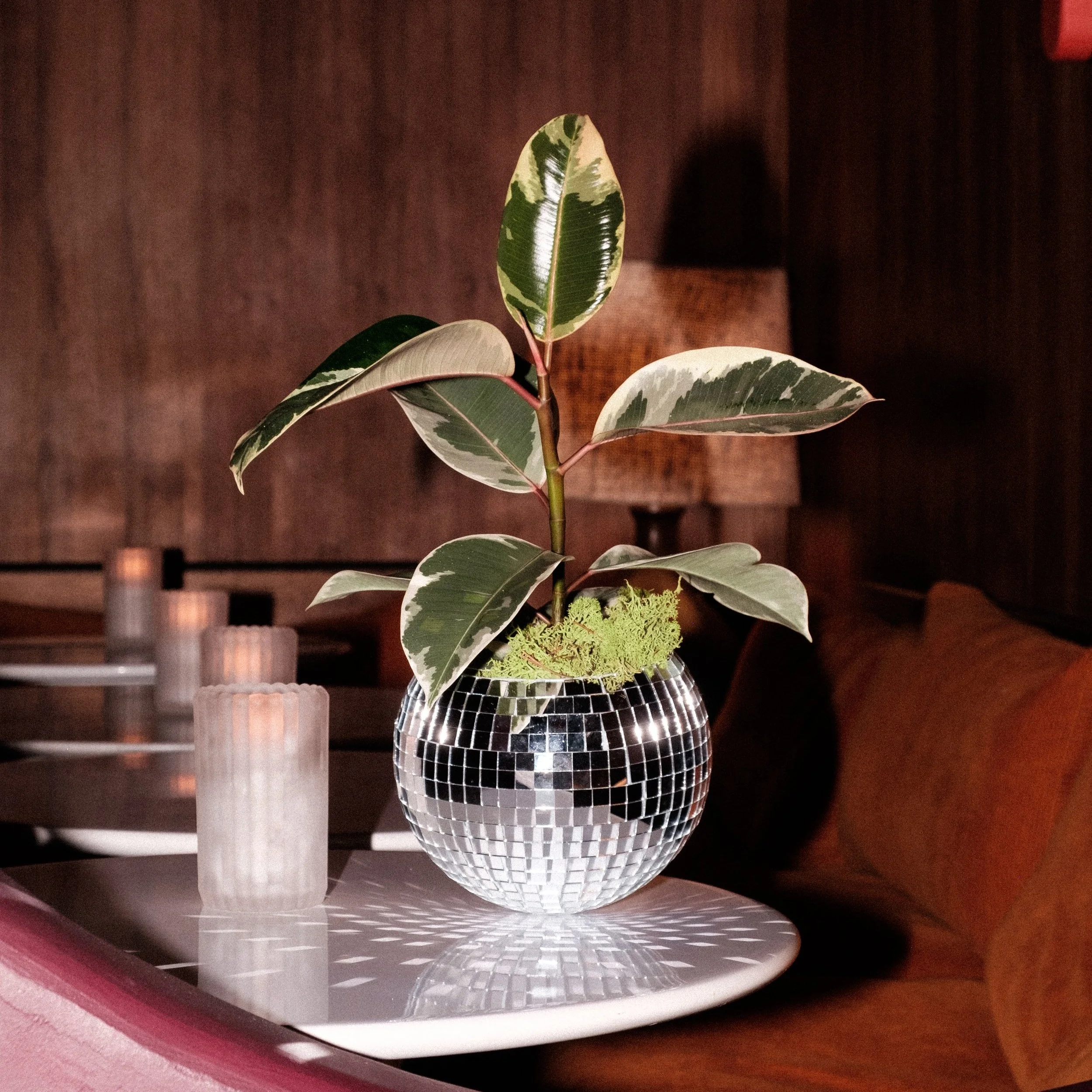Ficus: Forever A Favourite.
Ficus, also known as fig trees, are a popular houseplant choice for many plant lovers. With their attractive foliage and easy care, these plants have been common place in homes for generations. Ficus plants come in a variety of shapes and sizes, making it easy to find one that fits perfectly in any space. Below I’ll suggest some varieties of Ficus that suit most homes and offices, as well as some basic care tips for each of them.
Ficus benjamina
Ficus benjamina, also known as the weeping fig, is a popular indoor tree with long, slender branches and shiny, green leaves. It's a versatile houseplant that can grow to around six feet tall in the home, making it perfect for filling empty corners or adding height and drama to a room. It prefers bright, but indirect light and moderate humidity, so placing it near a window with filtered light or in a bathroom can help keep it happy. You could also introduce a humidifier to the space to boost humidity further. There are many varieties of this Ficus and some even have markings on the leaves in shades of cream and lime.
Ficus elastica
The ficus elastica, or rubber plant, is another popular Ficus variety with thick, glossy leaves that can grow up to 8 inches long. With a very retro 70s feel, this plant is great for adding texture and interest to any room. It's also known for its air-purifying abilities, so is ideal in an office high traffic area. It thrives most in bright, indirect light and prefers well-draining soil, so be sure to let it dry out between waterings. I like to use variegated varieties like this Ficus ‘Tineke’ as they have beautifully marked leaves that have a painterly feel.
Ficus lyrata
Ficus lyrata, also known as the fiddle-leaf fig, is a very popular plant that has taken over social media in recent years. It has large, violin-shaped leaves that can grow up to 18 inches long, making it a statement piece in any room. Most advice available says thatthe Ficus lyrata prefers bright, indirect light in your home, but in reality it prefers to be in full sunshine as this is where you’ll find it growing in its native habitat. It does prefer high humidity however, so misting it regularly or using a humidifier nearby can help it to thrive. It's also important to let the soil in the pot dry out between waterings to prevent the age old problem of root rot. My tip is to poke your finger an inch down into the soil to feel if it’s damp, if it is, hold off on watering for a few days more.
Ficus microcarpa ‘Ginseng’
Ficus microcarpa ‘Ginseng’ is a popular indoor plant that has become a favourite among bonsai enthusiasts. A native of Southeast Asia, it’s known for its thick, bulbous roots and twisted trunk which can add a touch of elegance and serenity to any room. It’s fairly easy to care for, so with a little attention, this bonsai can thrive for many years, making it a great investment for those looking to bring a bit of nature into their homes. This plant prefers bright, indirect light and should be watered only when the top inch of soil is dry to the touch. It also benefits from occasional misting and fertilisation during the growing season. It’s ideal for any beginner indoor gardener who’s looking to try something new.
Care Tips
No matter which variety of ficus you choose, there are a few care tips that apply to all of them. First, make sure to keep them away from cold drafts or hot, direct sunlight (exc. Ficus lyrata) as this can stress the plant and cause leaf drop. Second, water them when the top inch of soil feels dry to the touch, and be sure to use well-draining soil to prevent root rot. Finally, fertilise them once a month during the growing season to promote healthy leaf and root growth.




